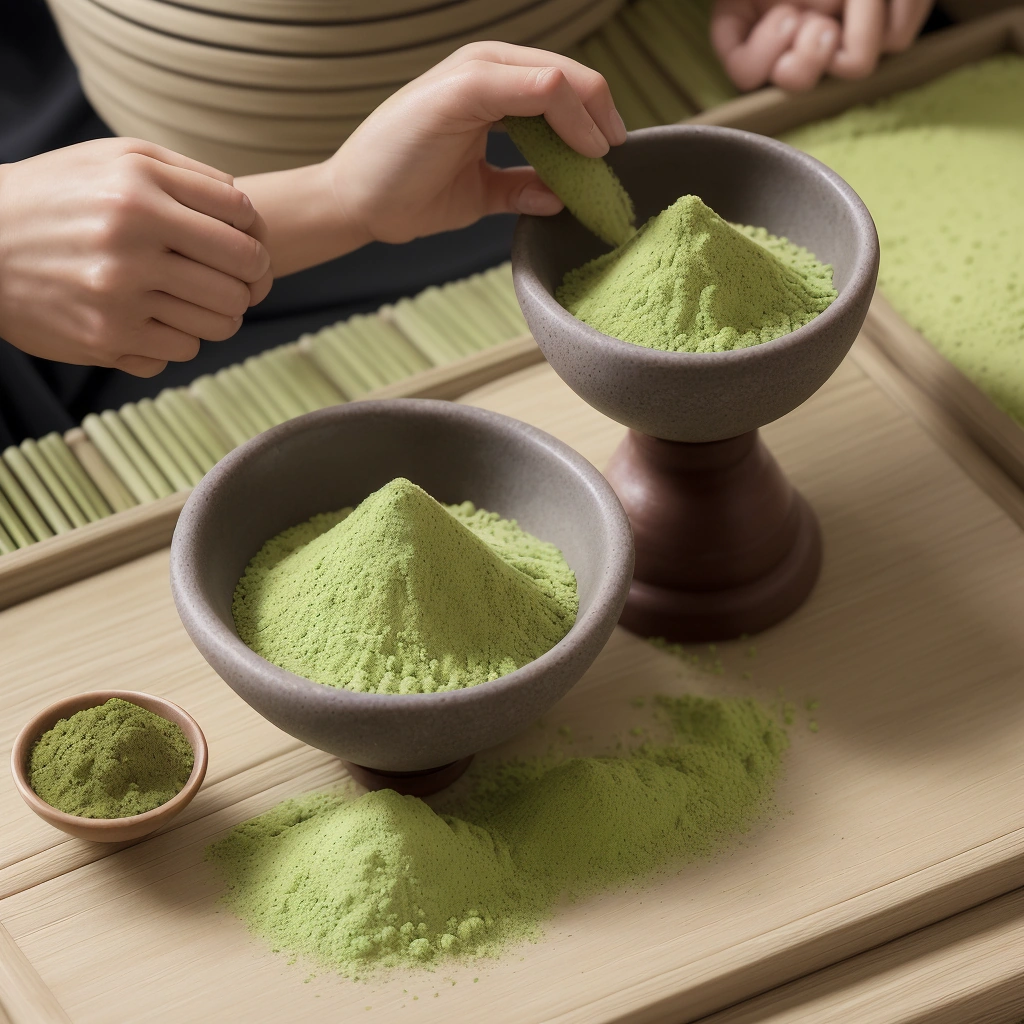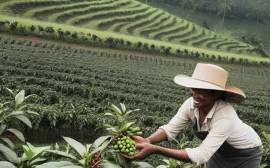Crafting Authentic Matcha: A Journey Through Japan’s Traditional Tea Regions
From vibrant green bowls in serene tea rooms to the ubiquitous matcha latte gracing café menus worldwide, matcha’s presence has exploded, transcending its origins. Yet, beneath this modern wave of popularity lies a centuries-old tradition, deeply rooted in the heart of Japan. This article delves into the intricate journey of matcha, from the meticulously shade-grown tea fields to the finely stone-ground powder, exploring the artistry, cultural significance, and sustainable practices that define this unique Japanese tea.
We’ll journey through renowned regions like Uji, Nishio, and Shizuoka, each contributing unique characteristics to the final product. Understanding this journey is crucial for appreciating not just the taste, but also the profound heritage embedded within each sip. Matcha’s story is inextricably linked to the Japanese tea ceremony, or *chanoyu*, a ritualized practice emphasizing harmony, respect, purity, and tranquility. Originally embraced by Zen Buddhist monks as a meditative aid, matcha gradually permeated Japanese society, becoming an integral part of its cultural fabric.
The tea ceremony itself is a carefully choreographed performance, from the precise whisking of the matcha to the selection of accompanying sweets. The vibrant green hue of the matcha, carefully chosen teaware, and serene atmosphere all contribute to a multi-sensory experience designed to foster mindfulness and connection. This ritualistic consumption contrasts sharply with its modern applications, highlighting the complex evolution of matcha’s role in society. The allure of matcha extends beyond its cultural significance; its purported health benefits also contribute to its global appeal.
Matcha is celebrated for its high concentration of antioxidants, particularly catechins, which are believed to combat free radicals and promote overall well-being. Unlike steeped tea, where the leaves are discarded, consuming matcha involves ingesting the entire leaf, maximizing the intake of these beneficial compounds. While scientific research continues to explore the full extent of these benefits, the perception of matcha as a healthy and energizing beverage has undoubtedly fueled its widespread adoption. This perception, however, also raises questions about quality and authenticity, as not all matcha is created equal.
However, the future of authentic matcha production faces significant challenges, particularly concerning sustainable agriculture and the impacts of climate change. Traditional shade-growing methods, while essential for producing high-quality tencha, require significant resources and labor. Furthermore, fluctuating temperatures, increased rainfall, and other extreme weather events threaten the delicate balance of the tea plants and the livelihoods of the farmers who cultivate them. Adapting to these challenges requires innovative approaches, such as implementing climate-resilient farming techniques, promoting biodiversity in tea fields, and ensuring fair compensation for farmers who uphold sustainable practices.
The preservation of matcha’s legacy hinges on a commitment to both quality and environmental stewardship. Ultimately, appreciating authentic matcha involves understanding the interconnectedness of its various aspects: the meticulous cultivation practices, the artistry of the tea ceremony, the potential health benefits, and the challenges of sustainability. By delving into these complexities, we can move beyond the surface-level trends and gain a deeper appreciation for the rich history and cultural significance of this remarkable Japanese tea. As consumers, we have a responsibility to support producers who prioritize quality, sustainability, and the preservation of traditional knowledge, ensuring that future generations can continue to enjoy the vibrant green elixir that is matcha.
The Art of Shade-Growing: Nurturing Tencha
The journey of authentic matcha begins with tencha, the precursor leaf cultivated with meticulous care. Shade-growing, a defining practice in matcha production, transforms the tea leaves, imbuing them with their distinctive characteristics. Weeks before the spring harvest, tea bushes destined for matcha are enveloped in elaborate structures, a practice dating back centuries. These structures, traditionally crafted from reed and bamboo, create a filtered light environment, reducing sunlight exposure by approximately 80-95%. This strategic deprivation of sunlight triggers a cascade of physiological changes within the tea plant.
Chlorophyll production intensifies, resulting in the vibrant emerald green hue so prized in high-quality matcha. The shade also stimulates an increase in amino acid content, particularly L-theanine, which contributes to matcha’s rich umami flavor and its characteristically smooth, non-bitter taste. Regional variations exist in these shade structures, from the traditional reed screens known as “honzu” used in Uji, to the more modern mesh coverings employed in Nishio and Shizuoka. These variations in shading techniques, combined with regional microclimates and soil compositions, influence the final flavor profile of the matcha, creating subtle nuances between regions.
The art of shade-growing is not merely a traditional practice; it is a carefully orchestrated manipulation of the tea plant’s environment to unlock its full potential. This process requires deep knowledge passed down through generations of tea farmers. The timing and degree of shading are crucial, as is the management of temperature and humidity within the shaded environment. These factors, combined with the specific cultivar of tea plant used, contribute to the unique characteristics of each matcha harvest.
Furthermore, shade-growing contributes to the higher concentration of beneficial compounds like antioxidants and caffeine in matcha. The increased chlorophyll production results in a greater presence of chlorophyllin, a powerful antioxidant. The heightened levels of L-theanine promote a calm, focused alertness, balancing the stimulating effects of caffeine. In the face of climate change, sustainable shade-growing practices are becoming increasingly important. Traditional methods, like the use of organic materials for shading and natural pest control, minimize environmental impact. Moreover, the shade structures themselves can offer a degree of protection against extreme weather events, safeguarding the delicate tea plants. Looking ahead, sustainable agriculture practices will be vital to preserving the future of matcha production and ensuring the continued availability of this cherished beverage.
From Leaf to Powder: Harvesting, Processing, and Grinding
The journey from tencha leaf to vibrant matcha powder is a testament to meticulous craftsmanship, a process honed over centuries in Japan’s prime tea-growing regions like Uji, Nishio, and Shizuoka. Harvesting tencha is a delicate dance with nature, often done by hand to ensure only the youngest, most tender leaves, brimming with chlorophyll and amino acids, are selected. This typically occurs during the first harvest of spring, known as the “first flush,” when the leaves are at their peak flavor and nutritional potency.
This careful selection contributes significantly to matcha’s vibrant green hue and rich umami flavor, highly prized in Japanese tea ceremonies and culinary applications. After the delicate harvest, the leaves are swiftly steamed, a crucial step to halt oxidation and lock in the vibrant emerald color and fresh, vegetal aromas. This process, central to preserving matcha’s unique characteristics, distinguishes it from other teas that are allowed to oxidize. The steamed leaves, now referred to as “aracha,” are then carefully laid out to dry, a process that further concentrates their flavor compounds.
Subsequently, the aracha undergoes a meticulous de-veining and de-stemming process, transforming it into “tencha,” the raw material for matcha. This refining stage removes any remaining coarse elements, ensuring the final product has a smooth, velvety texture. Finally, the tencha embarks on its transformation into the fine powder we know as matcha. Traditionally, this is achieved through stone-grinding, an art form in itself. Granite stones, meticulously crafted and maintained, slowly pulverize the tencha, a process that can take up to an hour to produce a mere ounce of high-quality matcha.
This slow, deliberate grinding preserves the delicate volatile compounds responsible for matcha’s complex aroma and prevents heat damage that could compromise its flavor profile. The resulting powder, vibrant green and intensely aromatic, is the culmination of generations of expertise and dedication to preserving the authenticity of Japanese tea. The specific techniques employed in the grinding process, passed down through generations of matcha artisans, contribute significantly to the final product’s quality. The temperature and speed of the grinding stones are carefully controlled to avoid friction-induced heat that can degrade the delicate nuances of the matcha.
This slow, deliberate process ensures that the final product retains its vibrant color, fresh aroma, and rich, umami flavor. Furthermore, the choice of stone material and the intricate carvings on their surface play a crucial role in achieving the desired fineness and texture of the matcha powder. The commitment to traditional stone-grinding is a testament to the reverence for matcha’s heritage and the dedication to preserving its authentic qualities. In contrast, modern industrial methods, while offering higher production volumes, often compromise the delicate flavor profile and nutritional integrity of the matcha.
The sustainable practice of shade-growing, along with these traditional processing methods, further elevates matcha’s status as a premium product. These practices not only enhance the flavor and nutritional value but also contribute to the preservation of traditional agricultural techniques and the cultural heritage associated with matcha production. As consumer demand for high-quality, authentic matcha continues to grow, producers are increasingly emphasizing these traditional methods as a mark of quality and a commitment to sustainability, ensuring the future of this cherished Japanese tea tradition.
Grading and Classification: A Spectrum of Quality
Matcha is meticulously graded based on a confluence of factors, each contributing to its unique character and intended use. These factors include the intensity and vibrancy of its color, the complexity and nuance of its aroma, the fineness and smoothness of its texture, and, of course, the overall flavor profile. Ceremonial grade matcha, the highest echelon of quality, boasts a strikingly vibrant green hue, a testament to careful shade-growing techniques and the high chlorophyll content within the youngest tea leaves.
Its flavor is characterized by a natural sweetness and a creamy, smooth mouthfeel, making it ideal for the traditional Japanese tea ceremony, where the unadulterated taste of matcha is paramount. This grade often hails from renowned regions like Uji and Nishio, known for their optimal growing conditions and centuries of expertise. In contrast, culinary grade matcha presents a slightly more robust and assertive flavor profile, often exhibiting a subtle bitterness that lends itself well to a variety of culinary applications.
While still possessing a vibrant green color, it may be slightly less intense than its ceremonial counterpart. This grade is frequently incorporated into lattes, smoothies, baked goods, and other culinary creations, where its distinct flavor can complement other ingredients without being overpowering. Culinary grade matcha provides a more accessible and versatile option for those seeking to incorporate the health benefits and unique taste of matcha into their daily lives. Regions like Shizuoka, while also producing ceremonial grade, are significant producers of culinary matcha.
The nuanced grading system also reflects the specific processing techniques employed during matcha production. The more delicate and time-consuming the process – from the careful hand-picking of shade-grown tencha leaves to the slow, deliberate stone-grinding that transforms them into an ultra-fine powder – the higher the grade the matcha is likely to achieve. For example, matcha intended for tea ceremonies is almost exclusively stone-ground, a method that minimizes heat and preserves the tea’s delicate flavor compounds and antioxidants.
This meticulous attention to detail throughout the production process ensures that each grade of matcha serves its intended purpose, whether it be the centerpiece of a serene tea ceremony or a flavorful addition to a modern culinary creation. Beyond the sensory characteristics, the sustainable agriculture practices employed in the cultivation of tencha also influence the grading and perceived value of matcha. Matcha sourced from farms committed to organic and biodynamic farming methods, which prioritize soil health and minimize the use of synthetic pesticides and fertilizers, are increasingly sought after by discerning consumers.
These practices not only enhance the environmental sustainability of matcha production but also contribute to the overall quality and purity of the final product. Consumers are increasingly aware of the impact of climate change on tea production, and are willing to pay a premium for matcha that is produced in an environmentally responsible manner. This emphasis on sustainability is driving innovation in tea production, with farmers exploring new techniques to mitigate the effects of climate change and ensure the long-term viability of their farms.
Furthermore, the level of antioxidants present in matcha can also play a role in its grading. Shade-grown tea leaves, shielded from direct sunlight, accumulate higher concentrations of chlorophyll and L-theanine, contributing to matcha’s vibrant color, smooth flavor, and potential health benefits. While not always explicitly stated on packaging, matcha with demonstrably higher levels of these beneficial compounds may command a higher price and be classified within a premium grade. Independent lab testing can verify antioxidant levels, providing consumers with valuable information to guide their purchasing decisions and ensuring they are selecting a matcha that aligns with their specific needs and preferences.
Preservation and the Future of Matcha
Preserving matcha’s unique qualities, from its vibrant green hue to its nuanced flavor profile, demands careful attention to storage. Exposure to air, light, and heat can trigger oxidation and degradation, diminishing the tea’s freshness and potency. Ideally, matcha should be kept in an airtight container, preferably opaque to block light, and stored in a cool, dark, and dry environment, such as a pantry or refrigerator. Proper storage practices are essential for maintaining the integrity of the tea, ensuring that each cup delivers the intended sensory experience.
Beyond individual efforts, the future of matcha hinges on navigating the complexities of climate change. Fluctuating temperatures, erratic rainfall patterns, and extreme weather events pose significant challenges to traditional matcha-growing regions like Uji, Nishio, and Shizuoka. These regions, renowned for their ideal terroir, are now facing unpredictable growing seasons and increased susceptibility to pests and diseases. Farmers are adapting through innovative agricultural practices, drawing on centuries of accumulated knowledge while embracing modern techniques. One such approach involves developing new shade structures that offer enhanced protection against intense sunlight and temperature fluctuations.
These structures, often incorporating advanced materials and designs, provide a more controlled environment for the delicate tencha leaves, mitigating the impact of extreme weather. Another crucial adaptation focuses on adjusting planting schedules to align with shifting climate patterns. By carefully monitoring weather forecasts and soil conditions, farmers can optimize planting times to minimize the risk of crop damage during critical growth stages. This proactive approach helps ensure a consistent yield of high-quality tencha, the foundation of exceptional matcha.
Furthermore, sustainable agricultural practices are gaining traction within the matcha industry. These methods prioritize soil health, water conservation, and biodiversity, promoting long-term ecological balance. By minimizing the use of synthetic fertilizers and pesticides, farmers can protect the delicate ecosystem of the tea fields, preserving the land for future generations. These sustainable practices not only contribute to environmental well-being but also enhance the quality and flavor of the matcha itself. The commitment to sustainable agriculture reflects a deep respect for the cultural heritage of matcha, ensuring its continued legacy in a changing world.
Consumers, too, play a vital role in supporting these efforts by choosing matcha from producers committed to sustainability and ethical sourcing. By embracing mindful consumption practices, we can collectively contribute to the preservation of this cherished beverage and the cultural traditions it embodies. The journey of matcha, from the shaded tea fields to the meticulously crafted cup, is a testament to the enduring power of tradition and the resilience of those dedicated to preserving it. As climate change continues to reshape the agricultural landscape, the future of matcha rests on a delicate balance between honoring time-honored practices and embracing innovative solutions. By working together, farmers, producers, and consumers can ensure that this vibrant green elixir continues to grace tea bowls and inspire moments of tranquility for generations to come.



